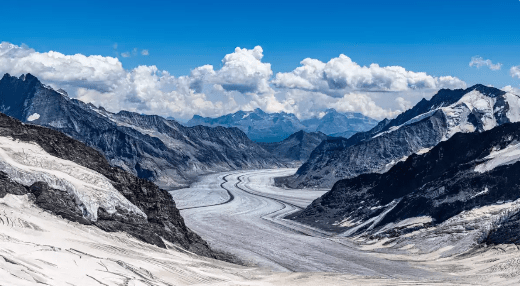As per the latest reports, glaciers in Switzerland have been rapidly shrinking, losing a total of 10% of their ice volume over a two-year period. This alarming trend is attributed to a combination of factors, including low snowfall and rising temperatures, which have led to unprecedented melting. In 2023, these glaciers lost 4% of their total volume, the second-highest loss on record, following the 6% reduction seen in 2022. Remarkably, the amount of ice lost in these two years is equivalent to what was lost over the entire three decades from 1960 to 1990.
Matthias Huss, who heads the Swiss Glacier Monitoring Network (GLAMOS), an organization that collects and analyzes glacier data in collaboration with the Swiss Academy of Sciences, expressed deep concern, describing the losses in 2022 and 2023 as ‘mind-boggling’ and an acceleration beyond previous experience. He emphasized that such extreme changes would have been impossible without the influence of climate change.
These extreme years have had dire consequences, causing glacier tongues to collapse and leading to the disappearance of many small glaciers across the country. One notable example is the St. Annafirn glacier in Switzerland’s Uri canton, which has shrunk so dramatically that GLAMOS has ceased monitoring it.
Unusually, even high-altitude regions that typically don’t experience such significant declines have recorded ice loss. In southern Valais and the Engadin Valley, at altitudes exceeding 3,200 m, several meters of ice have disappeared, as reported by GLAMOS.
Reports further add that these losses have occurred after a winter with very limited snowfall, with snow levels in the latter half of February reaching a record low of around 30% of the long-term average. Furthermore, a summer characterized by high temperatures resulted in accelerated snow melt, with a scorching and dry June causing snow to melt two to four weeks earlier than usual.

